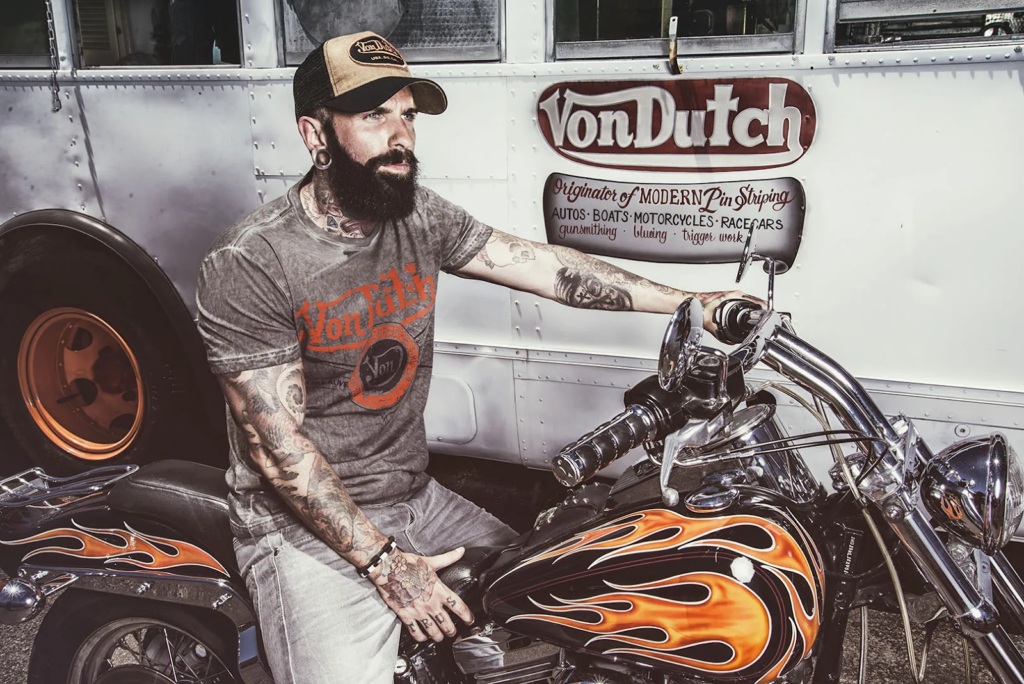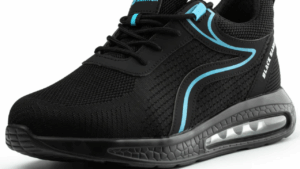
Von Dutch is a name inseparable from mid-2000s style, immediately unmistakable through its renowned trucker hats, decorated with a striking logo and worn by probably the greatest stars of that time. Yet, behind the VIP filled craze lies a more profound story, one established in the American nonconformity of the 1950s, the tradition of an unusual craftsman, and the development of streetwear style. From underground custom vehicle culture to worldwide distinction, Von Dutch is something beyond a brand — it’s an image of the impact between craftsmanship, resistance, and mainstream society.
The Man Behind the Name: Kenneth “Von Dutch” Howard
To comprehend Von Dutch, we should initially check its namesake: Kenneth Howard, an incredible pinstriper, cruiser specialist, and craftsman. Brought into the world in 1929, Howard was essential for the dragster and custom vehicle scene in Southern California during the 1950s and 1960s. His complex freehand pinstriping and specially crafts, frequently highlighting dreamlike symbolism like his renowned “flying eyeball” logo, became famous in the realm of speedsters and bikes.
Howard, who embraced the moniker “Von Dutch” (a sign of approval for his German roots and his difficult character), was known for his imaginative freedom and insurrectionary perspectives. He saw his work as unadulterated craftsmanship, not to be marketed or weakened by large scale manufacturing. Howard carried on with a savagely private and unusual life, and keeping in mind that his specialty earned respect, he never looked for standard distinction.
The Birth of the Von Dutch Brand
After Howard’s demise in 1992, his name and creative heritage were bought by business visionary Ed Boswell, who later offered the privileges to Michael Cassel and Robert Vaughn. They saw a chance to transform Von Dutch’s novel plans into a style name that mirrored the insubordinate soul of Kenneth Howard’s work. The Von Dutch brand was conceived, changing the embodiment of 1950s speedster culture into wearable workmanship.
At first, Von Dutch trucker hat special care of a specialty crowd, delivering clothing that drew on Howard’s unique craftsmanship and the taste of the custom vehicle world. In any case, it was only after the last part of the 1990s and mid 2000s that the brand genuinely detonated, because of the ascent of streetwear and a little assistance from Hollywood’s greatest stars.
The Trucker Hat That Took Over the World
At the core of Von Dutch’s fleeting ascent was its notorious trucker hat, a once unassuming, common frill that the brand changed into a high-design thing. The lattice upheld, froth front hat, embellished with the Von Dutch logo, turned into a staple of the mid 2000s superstar scene. Paris Hilton, Britney Lances, Justin Timberlake, and other Elite stars were in many cases seen wearing Von Dutch hats, immediately catapulting the brand into standard achievement.
The trucker hat’s prevalence represented something other than a passing style; it mirrored a bigger social second. The mid 2000s were a period of unscripted television, paparazzi culture, and the converging of big name impact with style. Von Dutch turned out to be important for that overall climate, embraced by individuals who needed to epitomise similar lighthearted, insubordinate demeanour as the famous people who wore it.
For a concise period, Von Dutch was all over the place. The brand’s hats, shirts, and extras were seen on red floor coverings, in music recordings, and in newspaper magazines. It was a brand that didn’t simply sell garments — it sold a way of life of restless coolness, one established in American subculture yet adjusted for a worldwide crowd.
The Downfall: Oversaturation and Changing Tastes
As is many times the situation with style that consume splendidly, the very things that made Von Dutch famous in the end prompted its destruction. The brand’s fast ascent implied it immediately became oversaturated. The trucker hat, when an image of defiant cool, was out of nowhere seen as a platitude, worn by everybody. Knockoff adaptations overwhelmed the market, weakening the brand’s selectiveness.
By the mid-2000s, tastes in design had moved. Moderation and a re-visitation of additional downplayed styles started to overwhelm, and the ostentatious, logo-weighty tasteful that Von Dutch supported began to feel obsolete. The brand, once inseparable from big-name stylish, became related with overabundance and a pastime. As fast as it had risen, Von Dutch blurred from the style spotlight.
The Resurgence of Y2K Nostalgia
However, the brand encountered a downfall, style, similar to history, is recurrent. The mid-2020s saw a resurgence of Y2K wistfulness, with Gen Z and recent college grads the same rediscovering the styles of the mid-2000s. Von Dutch, with its strong plans and obvious logo, turned into a vital piece of this restoration. Classic Von Dutch pieces, particularly the sought-after trucker hats, started to reemerge, with many style powerhouses and superstars by and by wearing the brand.
Von Dutch profited by this wistfulness by reissuing a portion of its exemplary plans and sending off new assortments. The brand embraced its place in mainstream society history, involving its heritage as both a style brand and an image of a specific social second to recapture significance at another time.
The Legacy of Von Dutch
Today, Von Dutch holds a novel spot in style history. It addresses a scaffold between the underground universe of custom vehicle culture and the impressive, big-name-driven style of the mid-2000s. The brand’s ascent and fall mirror the always-changing nature of design, where patterns can rapidly move from underground cool to standard immersion and back once more.
At its center, Von Dutch is an indication of how craftsmanship and design converge, how subcultures can be marketed and embraced by the standard, and how wistfulness can bring back patterns once thought neglected. Kenneth Howard’s inheritance as a craftsman lives on through the brand, regardless of whether the first Von Dutch himself might in all likelihood never have imagined his name being worn by Paris Hilton on an honorary pathway.
Conclusion:
Von Dutch is something beyond a brand; a social peculiarity characterized a time of style and big name impact. From its underlying foundations in speedster workmanship to its rule as the high priority name of the mid 2000s, Von Dutch’s excursion through the universe of design is a demonstration of the force of style, sentimentality, and the persevering through allure of defiance. Whether cherished for its nostalgic worth or associated with its famous trucker hats, Von Dutch has procured its place as an extraordinary piece of design history.






